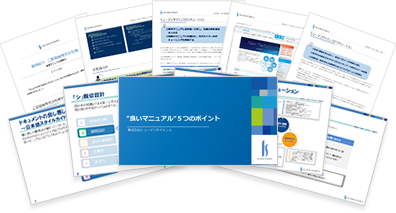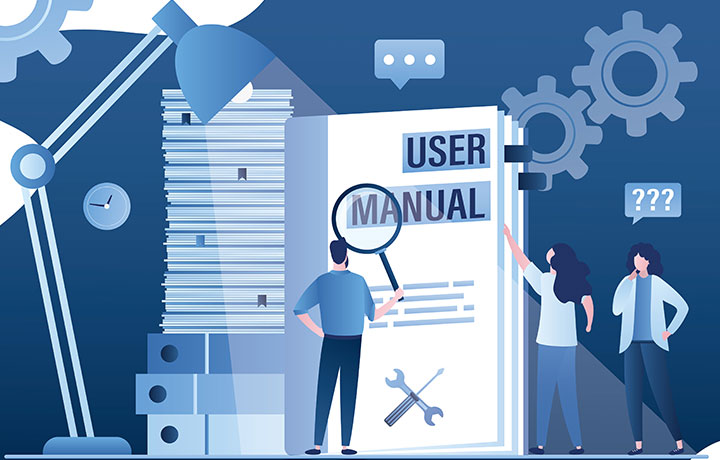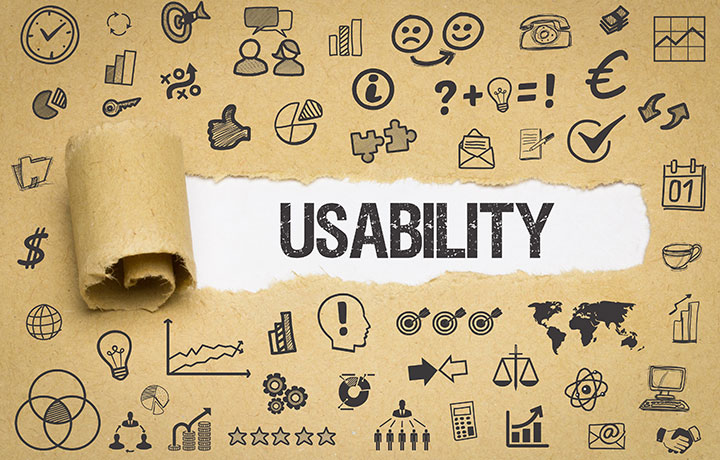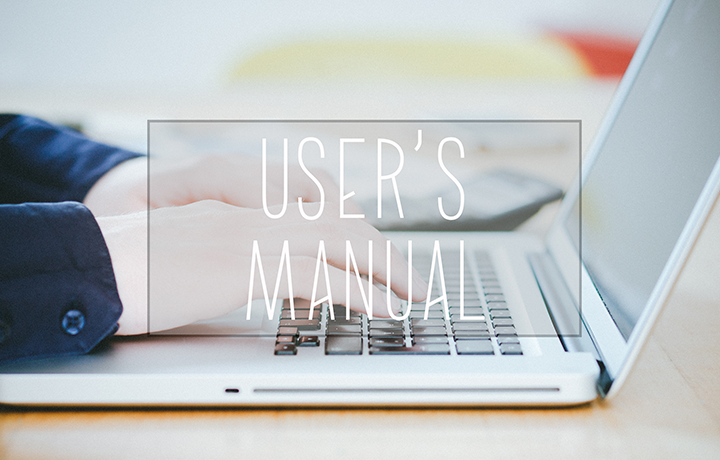Tips and methods for creating video manuals

This time, we will introduce tips and methods for creating video manuals.
In addition to the creation method, we will also explain the basic points such as the differences between paper and video manuals.
In modern times where efficiency is considered the top priority, it is necessary to actively use technology to increase productivity. Let's take advantage of the strengths of video manuals and aim to standardize work quality and reduce education costs even further.
- Table of Contents
1. Pros and Cons of Video Manuals

In this chapter, we will introduce the advantages and disadvantages of video manuals, as well as the merits and demerits of paper-based manuals that are often compared.
First, let's talk about the benefits of video manuals.
Benefits of Video Manuals ①: Excellent Clarity
The biggest advantage of video manuals is their ease of understanding.
Since they use both video and audio, they provide more information than paper-based manuals.
In particular, in terms of operation instructions, the ease of understanding of video manuals is unparalleled as they allow for a pseudo-experience of the operation.
Unfortunately, with paper-based manuals, it is difficult to convey the gap between operations.
For example, in the case of a manual for "Opening Yahoo! HP from Google search", the following instructions would be provided.
①PC operator: Type "yahoo" into Google's search bar and press Enter key
②Search results will be displayed
③PC operator: Click on "Yahoo! JAPAN" at the top of the search results
④Display Yahoo!'s homepage
For example, small details such as the waiting time for searches between ① and ②, or screen size adjustments between ③ and ④, cannot be conveyed in a paper-based format. Of course, it is possible to describe these details in detail, but this may blur the intended message of the manual.
However, it is different in video manuals. Since you can see the operation in the video between operations,
you can also convey information other than the announced content.
In the above case, by comparing the waiting time between ① and ② with the video manual, it is possible to notice any abnormalities.
In particular, for new system operations, the anxiety towards the new system can be dispelled through a pseudo-experience through videos.
Benefits of Video Manuals ②: Easy to Remember
Video manuals that stimulate both visual and auditory senses have the advantage of being more memorable than paper-based manuals.
Considering the cost of education, it is ideal to have fewer readings of manuals. The more it is ingrained in memory, the less time and effort is needed for confirmation, leading to cost reduction.
Benefits of Video Manuals #3: Easy Image Sharing
There is a benefit in sharing images among users because they can learn procedures and content from the same video. Since image sharing is possible, it leads to a certain level of work quality as it reduces the likelihood of user misunderstanding.
Benefits of Video Manuals ④: Learn Anytime, Anywhere
With video manuals that use smartphones and tablets, there is no need to choose a specific time or place. The ability to learn during travel time or short breaks is a benefit.
Benefits of Video Manuals #5: Cost Reduction
Video manuals do not require costs such as printing, transportation fees, and storage fees. It is possible to reduce costs compared to paper-based manuals.
Next, we will introduce the disadvantages of video manuals.
Disadvantages of Video Manuals ①: Equipment and environment preparation is necessary
Without the means and environment to watch videos, they cannot be viewed. Preparation is necessary, such as tablets, smartphones, and networks.
Also, those preparing will need a camera for filming and software/apps for editing.
Disadvantage of Video Manuals ②: Since they are played at a fixed speed, there is a possibility of missing something.
Videos are not suitable for conveying complex operating procedures because they flow smoothly and are difficult to repeat. They are also not suitable for content that needs to be read repeatedly.
Disadvantage of Video Manuals ③: Easy to Miss Information
Excellent visual expression and easy-to-understand benefits for viewers, but there is also a disadvantage of easily missing information.
Even within one screen, there is a lot of information from one end of the video to the other, and because it is created by adding a lot of information such as audio and captions, there is a disadvantage of easily missing information.
For this reason, it is necessary to focus on the main points and not include or highlight unnecessary information in the audio script and video editing (zooming in on specific areas or designing video manuals).
Disadvantage of Video Manuals ④: Production Skills
The advantage of video manuals is that they can create visually appealing and easy-to-understand content, but it requires a variety of skills to fully utilize their effectiveness.
Here, we will introduce four key points.
・Planning and Composition: First, we organize the plan for what we want to convey in this video / what we want the audience to understand, and how we should convey it. We then incorporate the information into the table of contents based on the set objectives.
・Writing: We break down the table of contents and create a manuscript to achieve the necessary knowledge acquisition. We determine what kind of video is needed and what kind of audio or captions should be used to supplement it.
・Material Creation: We create materials and designs such as filming videos, recording audio (or generating synthesized audio). Technical aspects such as camera work will be introduced in a separate section.
・Editing: Once the video and audio materials are ready, we combine them through editing. During the editing process, we also consider the objectives and think about where to focus and introduce specific instructions in the manuscript.
If these skills are lacking, it will be difficult to create high-quality video manuals. It will be necessary to either rely on personnel with specialized skills or develop the skills in-house.
Here, we have introduced the advantages and disadvantages of video manuals. Now, let's introduce the advantages and disadvantages of paper manuals.
First, let's look at the advantages of paper manuals.
Benefits of Paper Manuals ①: Control Learning Speed
This is a paper-based manual, so you can learn at your own pace. You can read over any parts that you are concerned about or stumble on multiple times, and you can also skip over parts if needed.
Benefits of Paper Manuals #2: Ability to Add Notes
If you have a paper-based manual, you can take notes. By adding your own tips and advice, you can learn more efficiently.
Benefits of Paper Manuals #3: No Need for Device or Environment Preparation
For paper-based manuals, no special preparation is required. You can read the manual immediately on the spot.
Benefits of Paper Manuals #4: For Those Not Familiar with Digital
One of the benefits of paper manuals is that they are easy to understand even for those who are not familiar with digital devices.
Video manuals can be too fast to fully understand, or too slow to keep one's interest. With paper manuals, one can read at their own pace. This also means that one can easily refer back to the manual while working without having to take their eyes off the task at hand. Additionally, paper manuals can be referenced even in places with unstable network environments.
2. Points to Consider When Creating Video Manuals

In the previous chapter, we introduced the advantages and disadvantages of videos and paper-based manuals. In this chapter, we will introduce the key points of creating video manuals, along with common examples of failures.
Example of failure ①: The steps and content are too packed and cannot be understood.
The first example of failure is a confusing video with disorganized information. Videos are reproduced at a constant speed, so if there is too much information or it is difficult to understand, it will go beyond the understanding of the viewer. It is not recommended to include information without considering its effectiveness, just to convey the desired content.
Point 1 for avoiding failure: Determine the target and content of the manual.
To narrow down the points to convey, it is important to determine the target and content of the manual.
For example, if the target is set to beginners, it is recommended to provide more detailed procedures and explanations. On the other hand, if the target is set to intermediate users, it is better to simplify the procedures and explanations and focus on important points. By setting the target, the content to be conveyed will naturally be determined.
Example of failure ②: Making everything, including detailed rules, into video manuals
The following example of failure is trying to turn everything into a video manual. For example, internal rules and regulations should be read slowly and repeatedly. In terms of repetition, videos are not efficient.
Point 2: Make the manual content suitable for videos to avoid failure.
As the saying goes, "the right person in the right place," let's make a manual that is suitable for the video content.
Internal rules and regulations that need to be read repeatedly are not suitable for videos, but paper-based manuals are more suitable. On the other hand, for procedures and operations that are easier to understand by seeing the actual thing, it is better to make a video manual.
Failure Example ③: Video content is difficult to understand
If the story is difficult to understand or if it is dark and difficult to see what is happening, the reliability of the video decreases and it lacks persuasiveness.
Point 3 for avoiding failure: Pay attention to the shooting environment and camera work.
For example, in instructional videos for operating equipment, it can be difficult to understand the overall flow and grasp the big picture in order to convey the details of the operation.
One useful approach to keep in mind is "from the whole to the details". When showing a scene of an operation, it is more understandable to first show the entire scene rather than immediately focusing on the operation itself.
Also, be mindful of the filming environment, such as lighting and tripod preparation.
Failure Example ④: Too Long Video
The third example of failure is a video that is too long. As a key point of a good manual, ease of search can be mentioned. If the video is too long, it is difficult to find the desired point quickly.
Point 4 for avoiding failure: Keep videos as short as possible
To quickly find the points you want to see, shorten each video. Videos that are about 1-2 minutes long per video will not burden the reader with too much time.
If it were a 1-hour video manual, it would not be easy to secure 1 hour during work. Also, due to lack of concentration, it is not efficient as a manual.
If it is a 1-minute video, it can solve the problems of time management and concentration.
For videos, it is not recommended to include too much information. Keep the narration concise and simplify the captions to avoid overwhelming the viewer with too much information.
Example of failure ⑤: Without watching the video, it is impossible to understand the content.
The last example of failure is not immediately understandable. For example, with the title "About the start of Machine A", the content is not understood until the video is watched.
Point 5 for not failing: Make the content easy to associate with the video title
Let's make the title of the video easy to associate with its content. By making the title easy to understand when creating a table of contents, it will greatly improve searchability. Let's name it in a way that allows people to easily identify the content by the title, assuming that many people will look back on it later.
3. Summary
How was it?
This time, we introduced tips and methods for creating video manuals. We also introduced the advantages and disadvantages of video manuals, so we hope you can use them in conjunction with paper-based manuals.
Video manuals are extremely effective in terms of ease of understanding. In today's globalized and remote work-oriented society, there is no doubt that the opportunities for them to play an active role will continue to increase.
However, while understanding the benefits of video manuals, many people may find it difficult to create them.
Especially when trying to balance regular work, creating, filming, and editing the content can require a lot of effort. One option is to leave the creation of video manuals to professionals.
Human Science has a proven track record of creating manuals for numerous companies in the manufacturing and IT industries since its establishment in 1985. Here are three key features of Human Science.
Features ①: Abundant track record with major companies such as Microsoft, Yahoo, and Softbank
At Human Science Co., Ltd., we are proud to have a track record of creating 215 manuals for 2854 companies. We have expertise in manual creation and will propose the best video manual based on "purpose", "target users", "usage scenes", and "budget".
Feature 2: Global Support
One of the benefits of video manuals is that they can convey what is seen. Therefore, it is easy to educate people who have difficulty understanding the language, such as foreigners.
Human Science offers support for 40 languages, making it possible to translate videos and subtitles and expand to various countries.
Feature 3: Cultivated Photography Techniques
If you have experience with video recording, you may know that it is a more difficult task than one might imagine. Not only do you need to consider camera angles, but also lighting techniques. With over 20 years of experience in video recording since 2000, we have the skills to capture the perfect footage for your needs.

















































 Manual Creation
Manual Creation Director, Writer
Director, Writer In-house support
In-house support Video
Video Manual
Manual Manual Creation
Manual Creation Manual Creation
Manual Creation Manual Documentation
Manual Documentation


